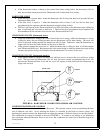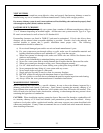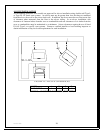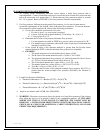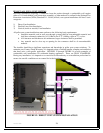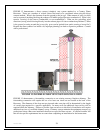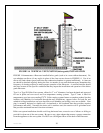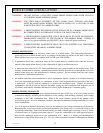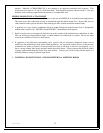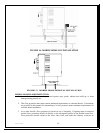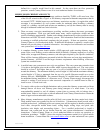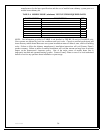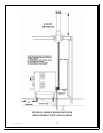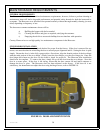
Version 2.0b 31
Be fire safe and maintain proper clearances to all combustibles from a pellet vent system. Always
ensure proper bracing and support for the pellet vent system and verify and conform to all local
building codes. Once installed, have the vent system inspected by a certified professional.
A chimney connector shall not pass through an attic, roof space, closet, floor, ceiling, or similar
concealed space. Where passage through a wall or partition of combustible construction is desired or
necessary, the installation shall conform to all national and local codes.
Whatever brand of vent system is used with a Harvester installation, a certified installer must ensure
that all chimney manufacturers’ installation instructions are followed and that all national and local
codes have been met.
OUTSIDE AIR COMBUSTION
It is imperative that the installer or homeowner ensures that a minimum of at least eight square inches
(fifty square centimeters) of outside air be admitted to the hearth room or directly to the Harvester. If
installation allows, the Harvester fresh air intake should be connected through an exterior wall.
Provision for outside combustion air may be necessary to ensure that fuel-burning appliances do not
discharge byproducts of combustion into the house. Guidelines to determine the need for additional
combustion air may not be adequate for every situation. If in doubt, it is advisable to provide outside
air.
Outside combustion air may be required if:
1. The Harvester does not draw steadily, smoke rollout occurs, fuel burns poorly, or back-drafts
occur whether or not combustion is present.
2. Existing fuel-fired equipment in the house, such as fireplaces or other heating appliances smell,
do not operate properly, suffer smoke rollout when opened, or back-draft occurs whether or not
combustion is present.
3. The home is equipped with a well-sealed vapor barrier and tight fitting windows or has any
powered devices that exhaust house air.
4. There is excessive condensation on home windows in the winter.
5. A ventilation system is installed in the house.
If any of these or other indicators suggests that infiltration air is inadequate, additional combustion air
should be provided from the outdoors to the Harvester appliance. Outside combustion air can be
provided to the appliance by the following means:
1. Direct connection: appliances can only use direct connection of outside combustion air if they
are certified for this type installation. Follow the Harvester instructions for direct connection of
outside combustion air.
2. Indirect connection: for appliances not certified for direct connection of outside combustion
air, outside air can be ducted to within twelve inches of the appliance.
3. Mechanical ventilation: if the house has a ventilation system (air change or heat recovery):
a. The ventilation system may be able to provide sufficient combustion make-up air for
the Harvester appliance.
b. The homeowner should be informed that the ventilation system might need to be re-
balanced by a ventilation technician after installation of the Harvester stove.



